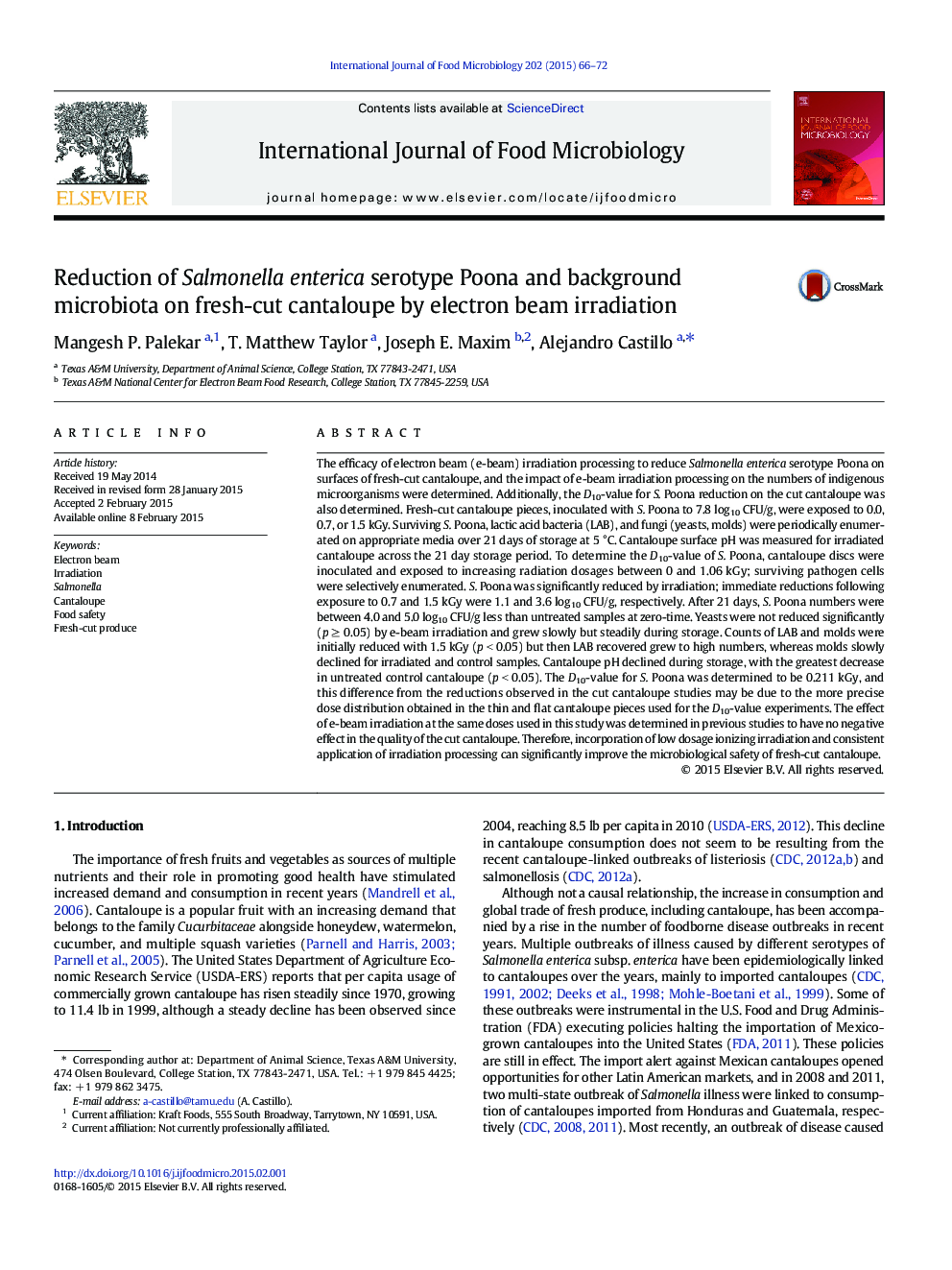| کد مقاله | کد نشریه | سال انتشار | مقاله انگلیسی | نسخه تمام متن |
|---|---|---|---|---|
| 4366537 | 1616581 | 2015 | 7 صفحه PDF | دانلود رایگان |

• Salmonella Poona was reduced on cantaloupe following 0.7 and 1.5 kGy irradiation.
• Irradiation reduced S. Poona by 4.0–5.0 log10 CFU/g versus control during storage.
• Molds did not change on irradiated cut melon pieces.
• A D10 of 0.211 kGy was determined for S. Poona inactivation on cantaloupe.
The efficacy of electron beam (e-beam) irradiation processing to reduce Salmonella enterica serotype Poona on surfaces of fresh-cut cantaloupe, and the impact of e-beam irradiation processing on the numbers of indigenous microorganisms were determined. Additionally, the D10-value for S. Poona reduction on the cut cantaloupe was also determined. Fresh-cut cantaloupe pieces, inoculated with S. Poona to 7.8 log10 CFU/g, were exposed to 0.0, 0.7, or 1.5 kGy. Surviving S. Poona, lactic acid bacteria (LAB), and fungi (yeasts, molds) were periodically enumerated on appropriate media over 21 days of storage at 5 °C. Cantaloupe surface pH was measured for irradiated cantaloupe across the 21 day storage period. To determine the D10-value of S. Poona, cantaloupe discs were inoculated and exposed to increasing radiation dosages between 0 and 1.06 kGy; surviving pathogen cells were selectively enumerated. S. Poona was significantly reduced by irradiation; immediate reductions following exposure to 0.7 and 1.5 kGy were 1.1 and 3.6 log10 CFU/g, respectively. After 21 days, S. Poona numbers were between 4.0 and 5.0 log10 CFU/g less than untreated samples at zero-time. Yeasts were not reduced significantly (p ≥ 0.05) by e-beam irradiation and grew slowly but steadily during storage. Counts of LAB and molds were initially reduced with 1.5 kGy (p < 0.05) but then LAB recovered grew to high numbers, whereas molds slowly declined for irradiated and control samples. Cantaloupe pH declined during storage, with the greatest decrease in untreated control cantaloupe (p < 0.05). The D10-value for S. Poona was determined to be 0.211 kGy, and this difference from the reductions observed in the cut cantaloupe studies may be due to the more precise dose distribution obtained in the thin and flat cantaloupe pieces used for the D10-value experiments. The effect of e-beam irradiation at the same doses used in this study was determined in previous studies to have no negative effect in the quality of the cut cantaloupe. Therefore, incorporation of low dosage ionizing irradiation and consistent application of irradiation processing can significantly improve the microbiological safety of fresh-cut cantaloupe.
Journal: International Journal of Food Microbiology - Volume 202, 2 June 2015, Pages 66–72